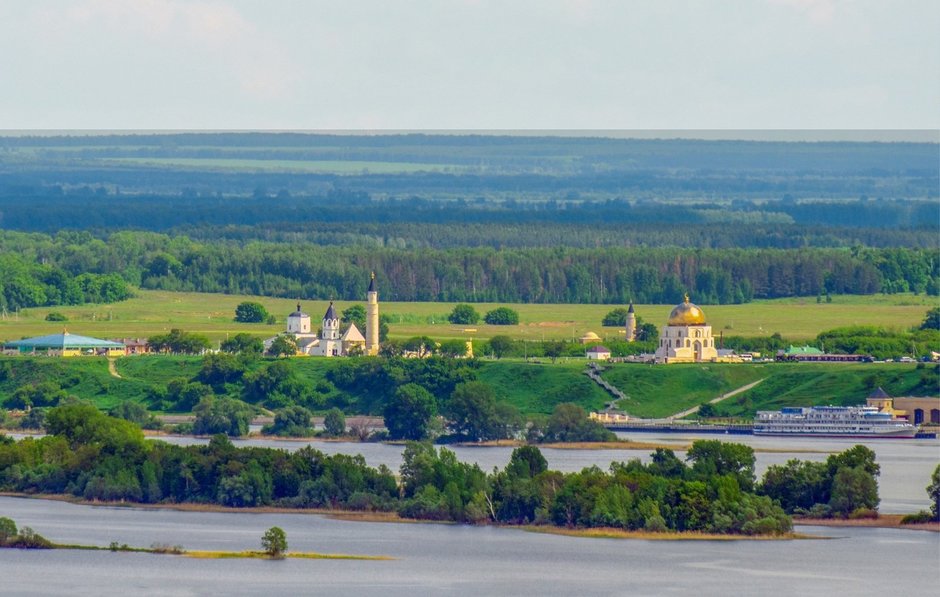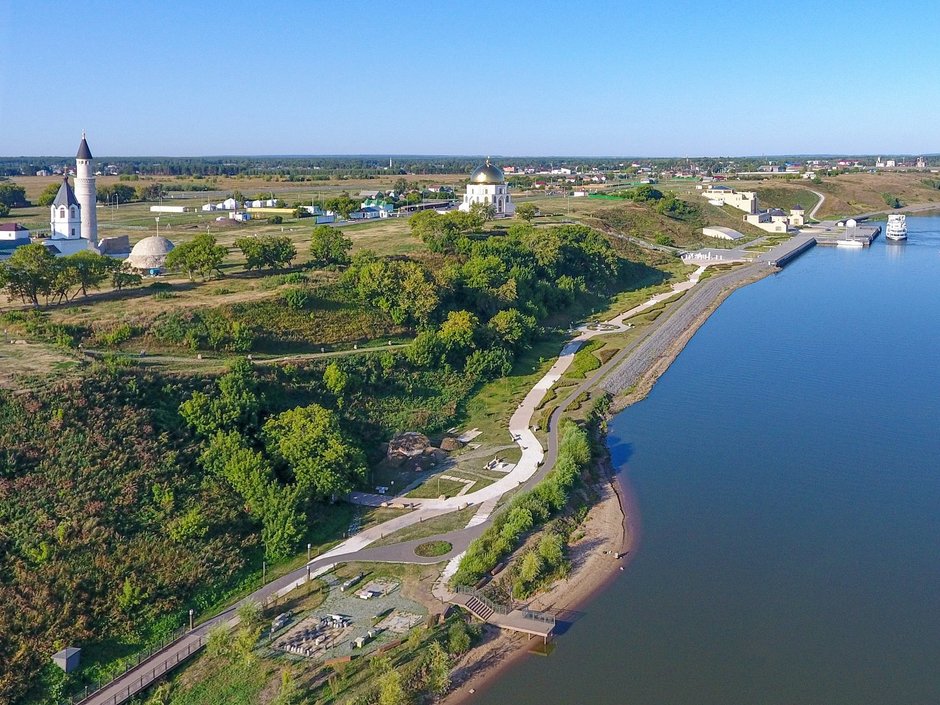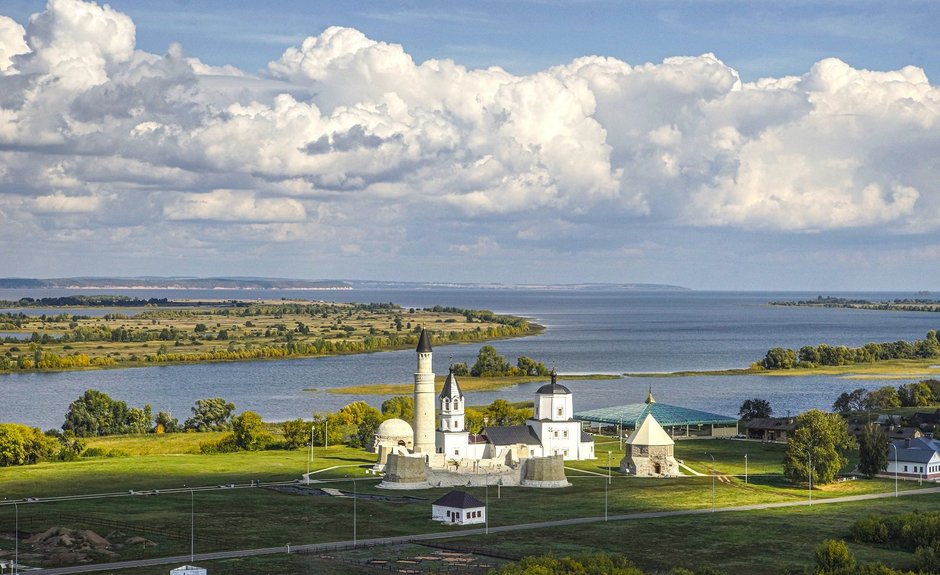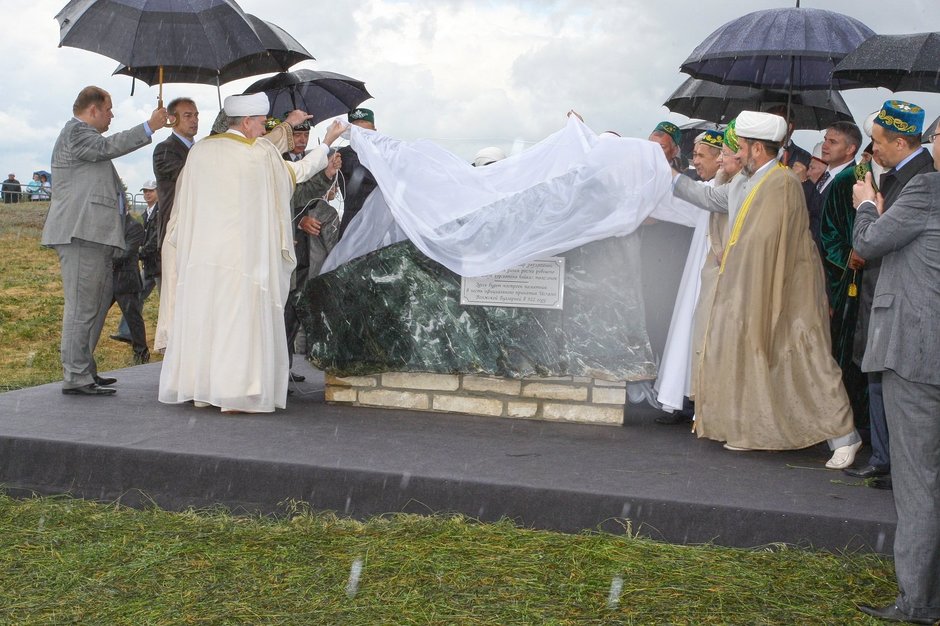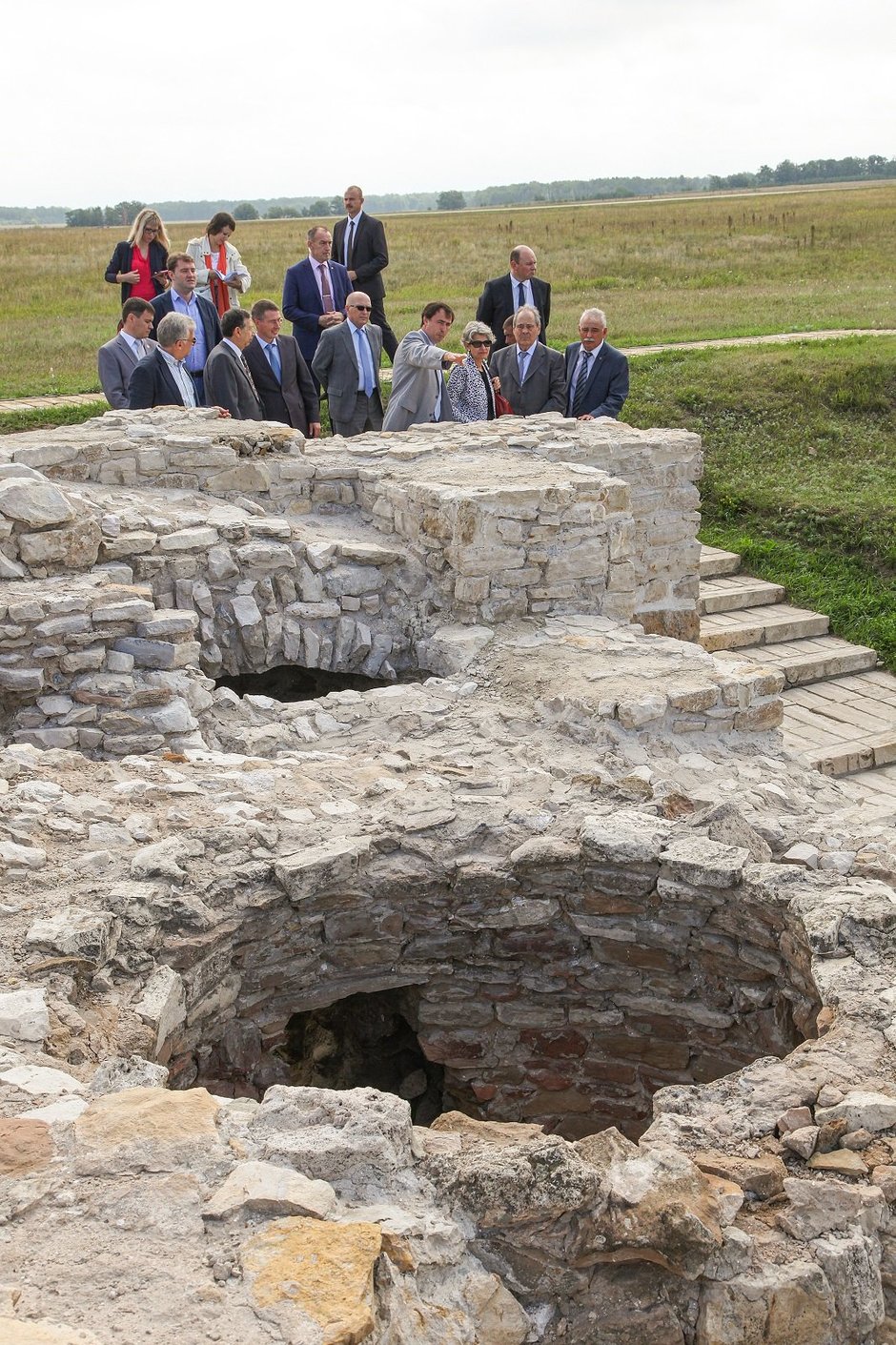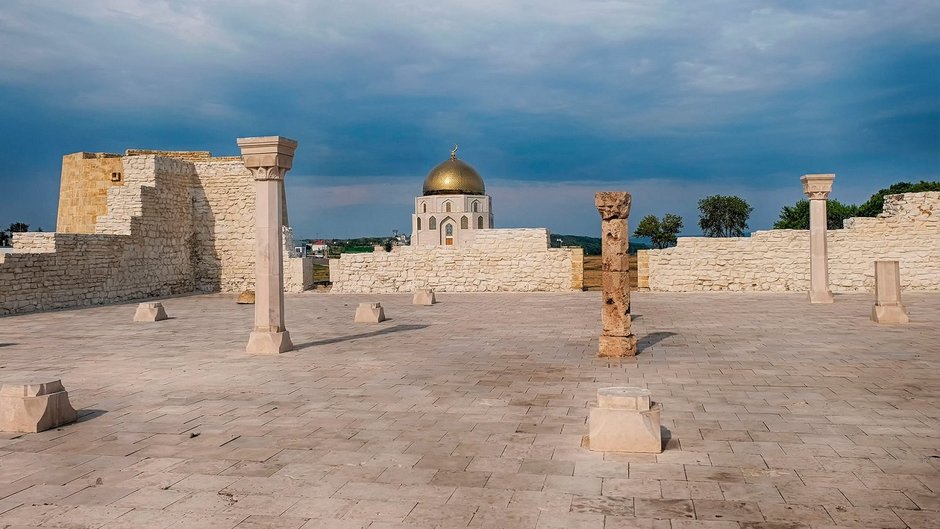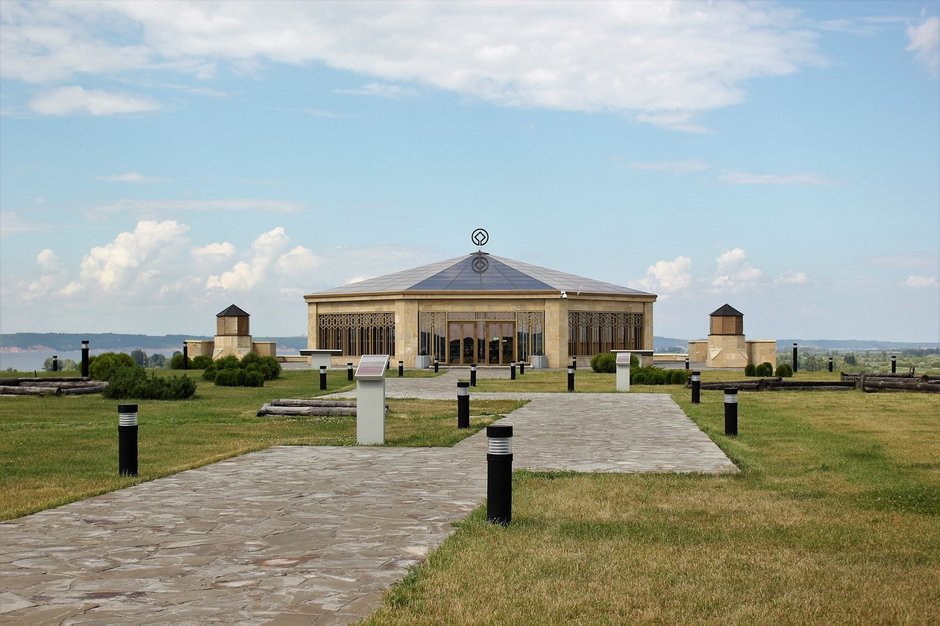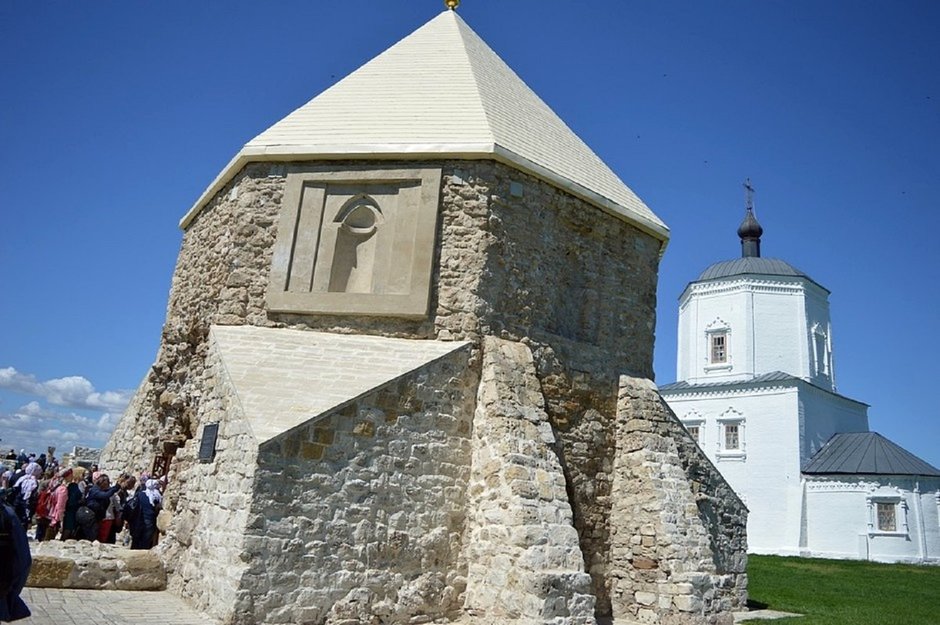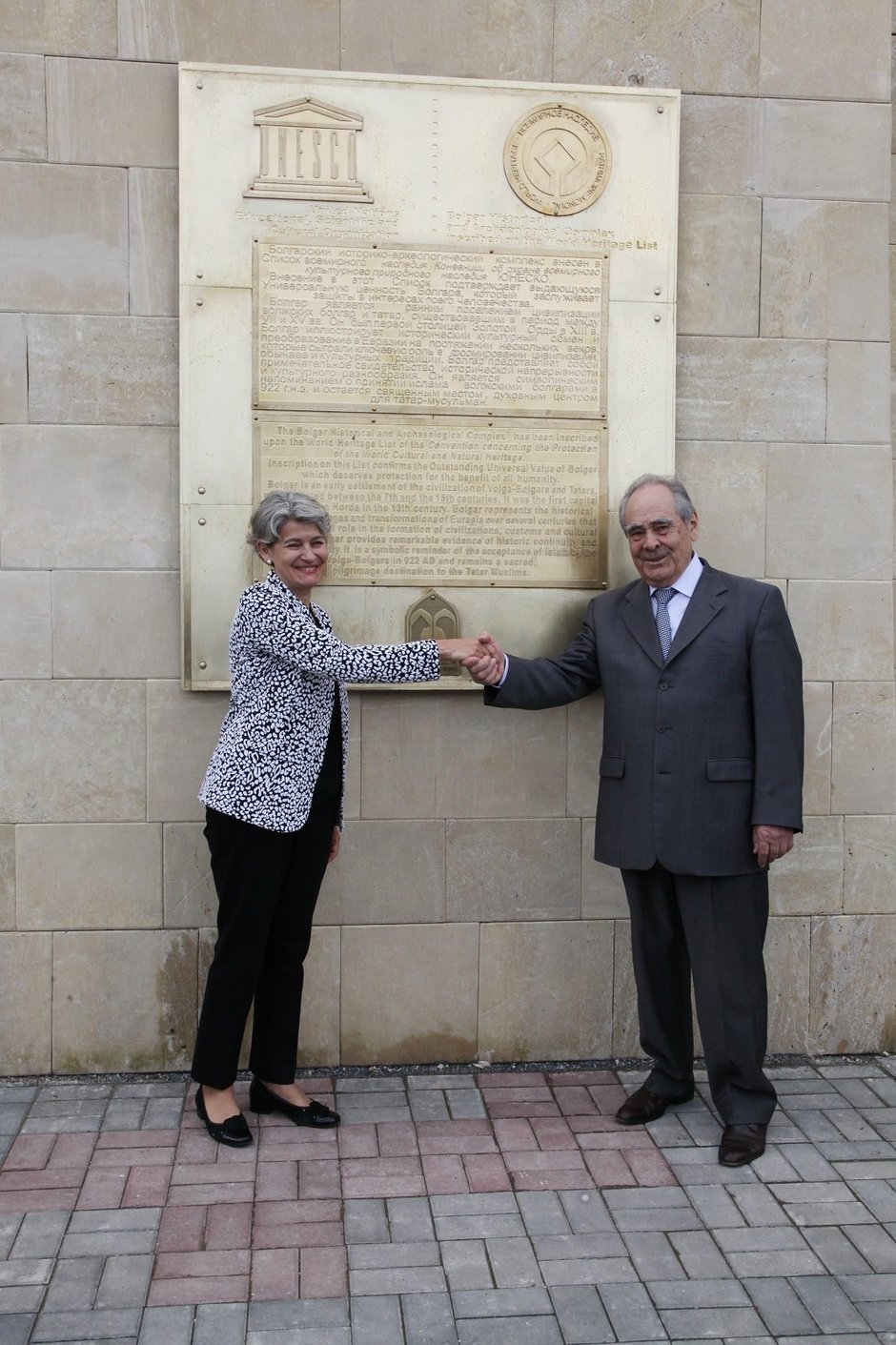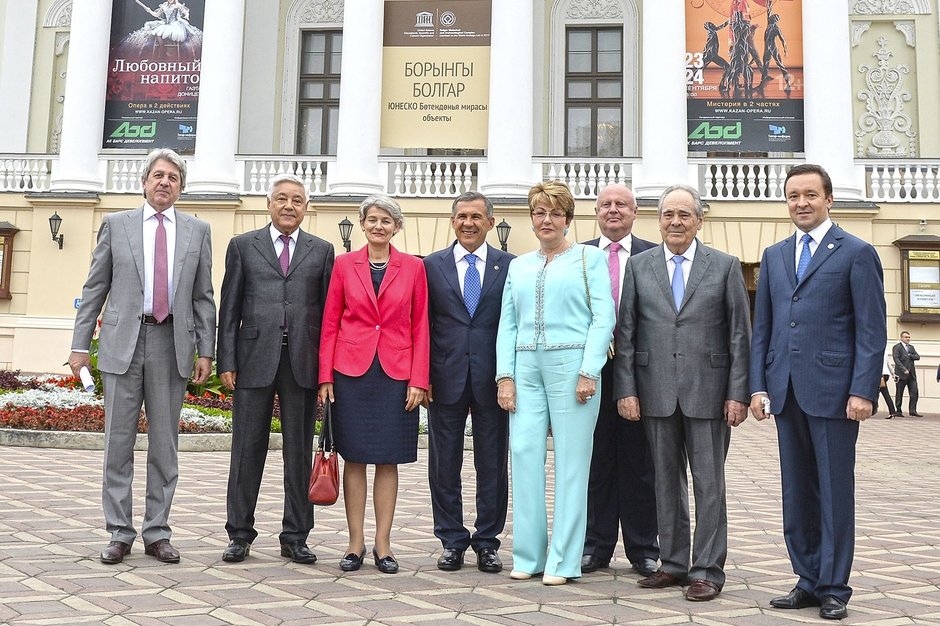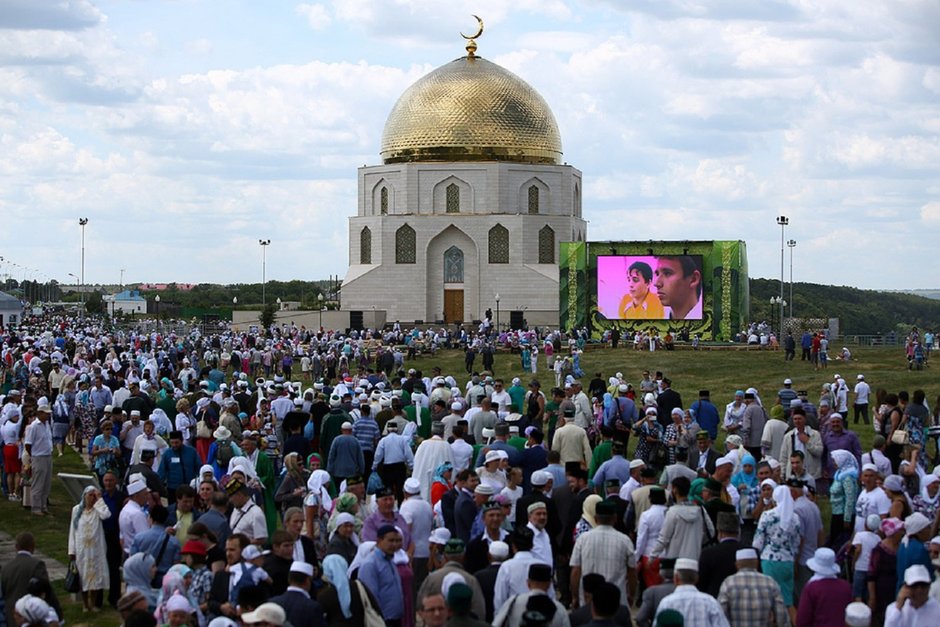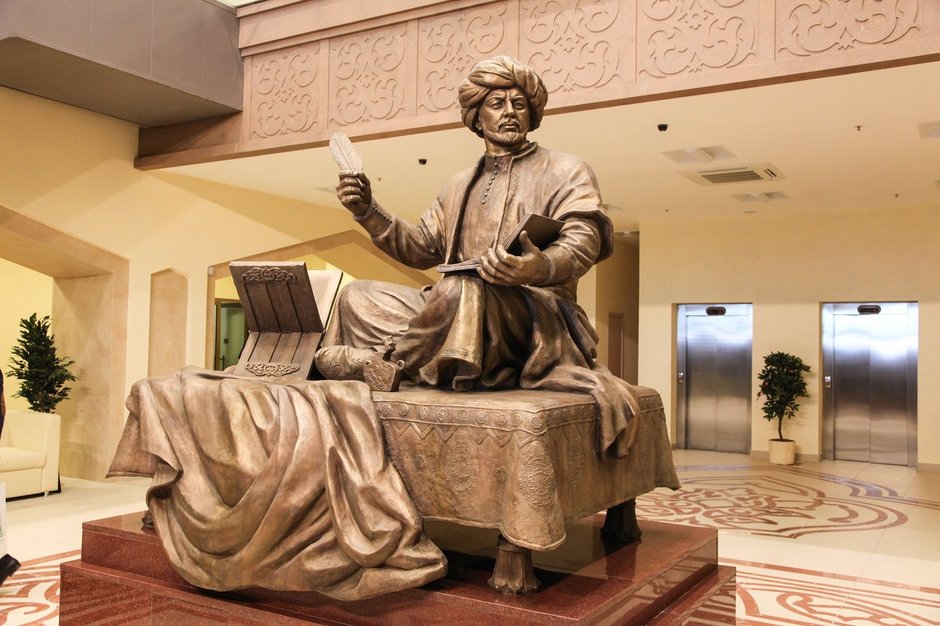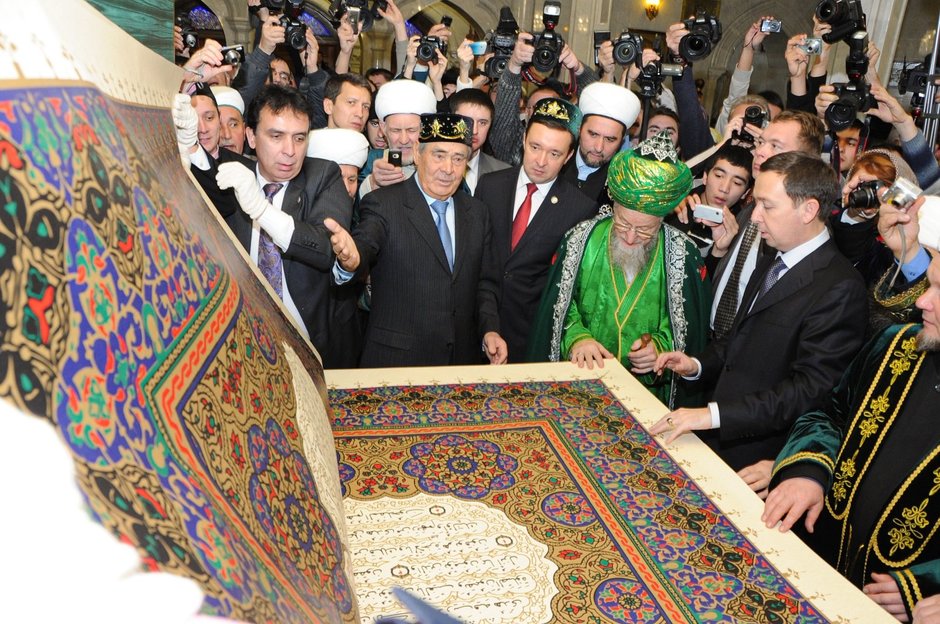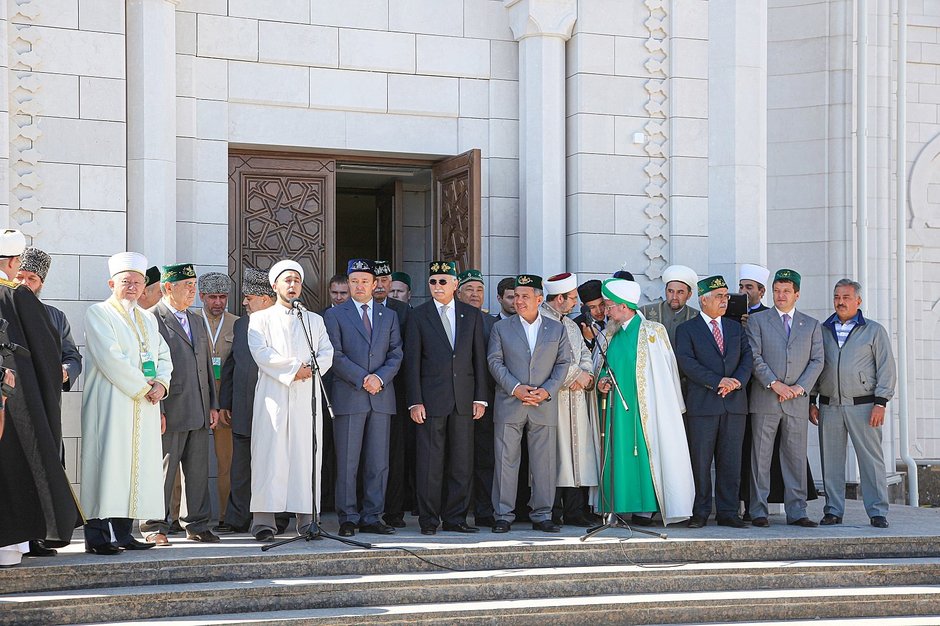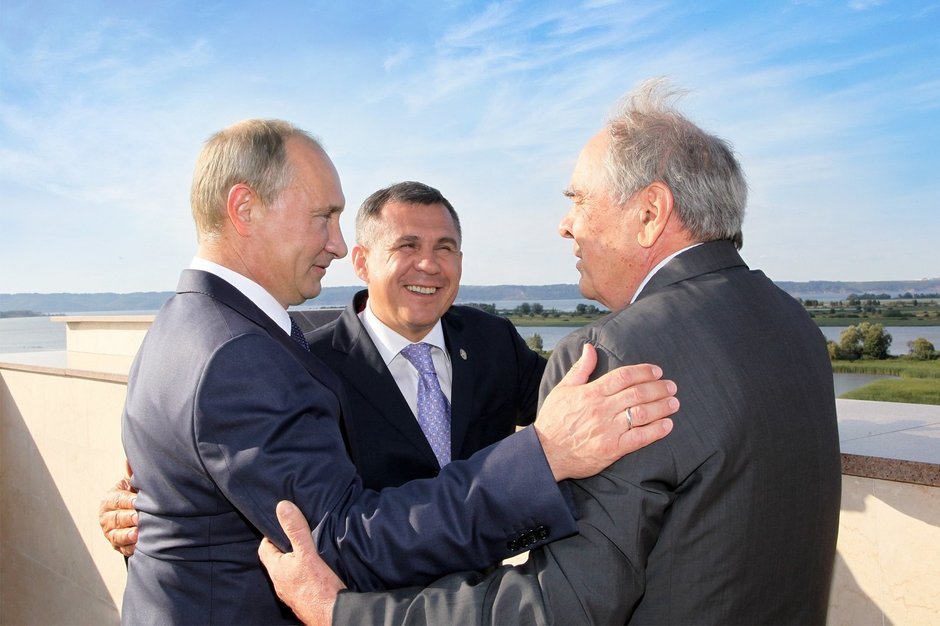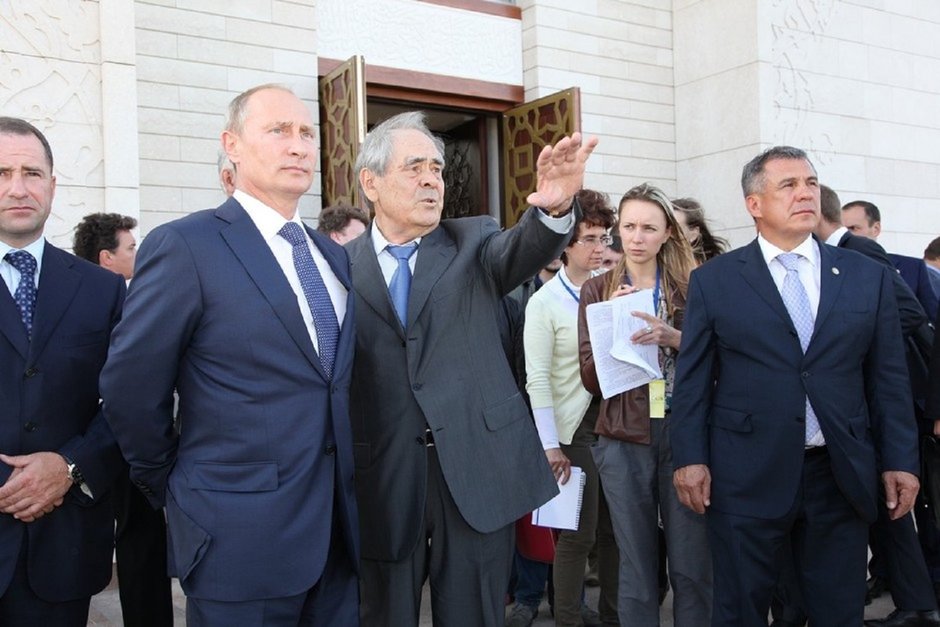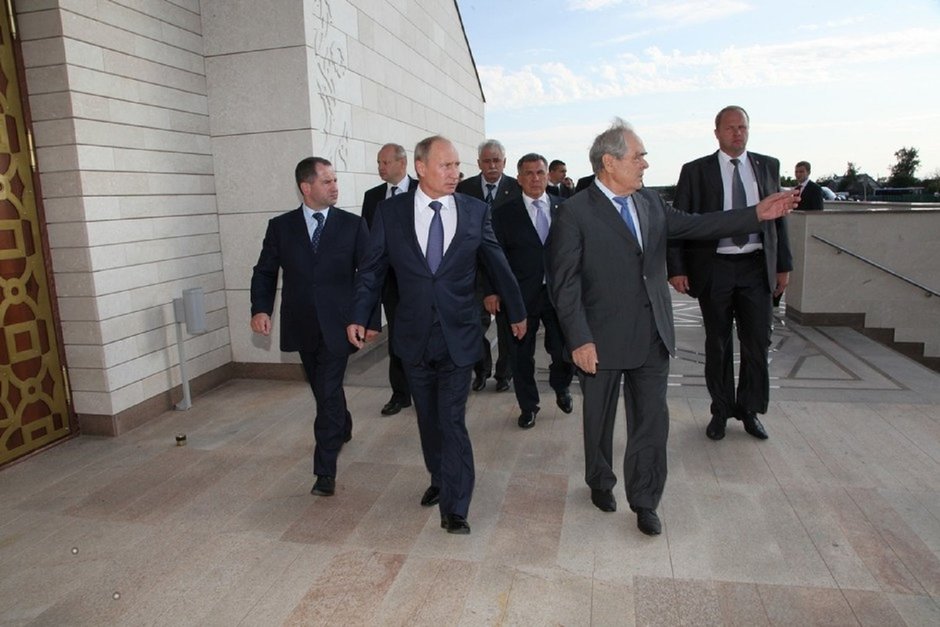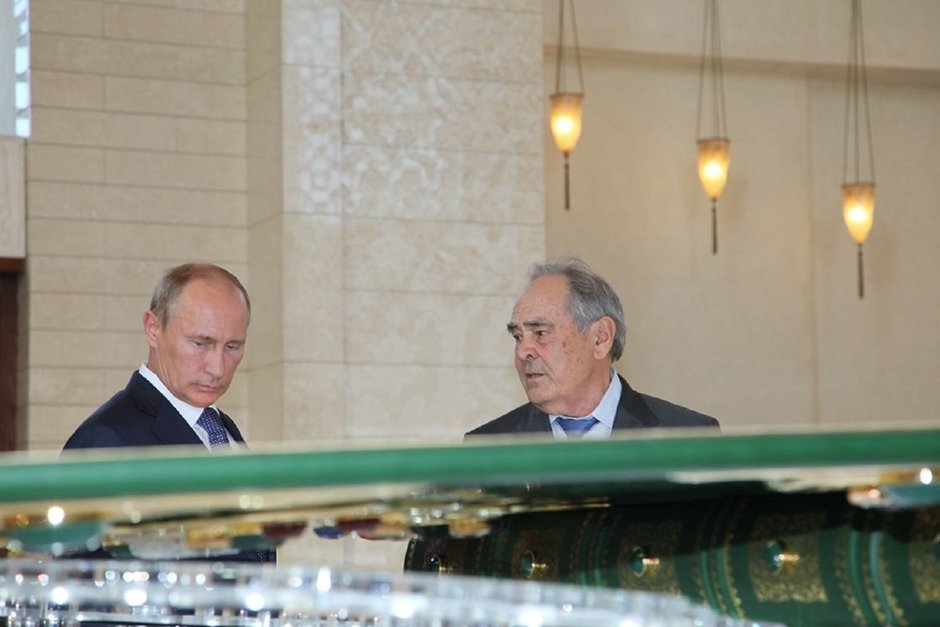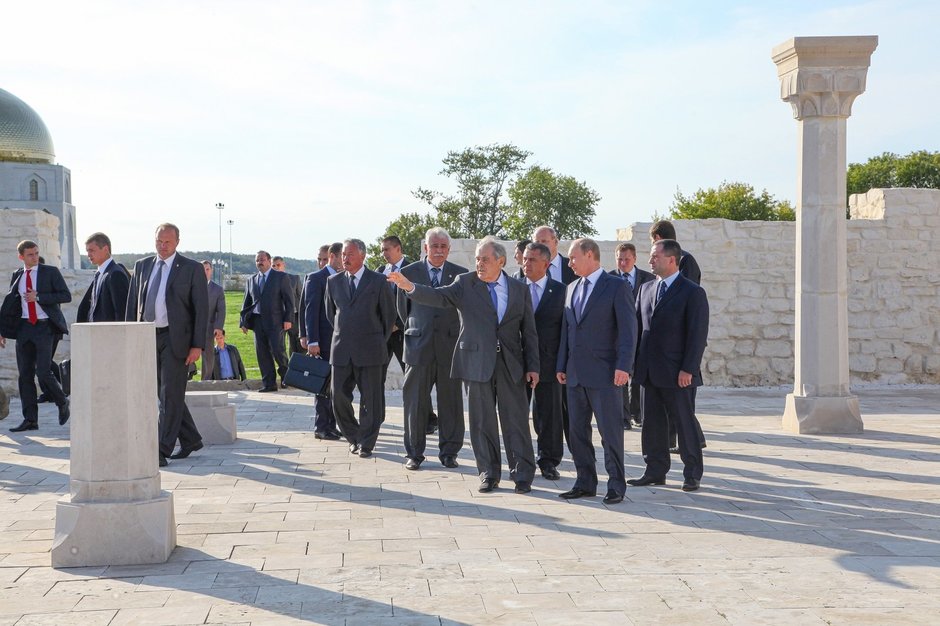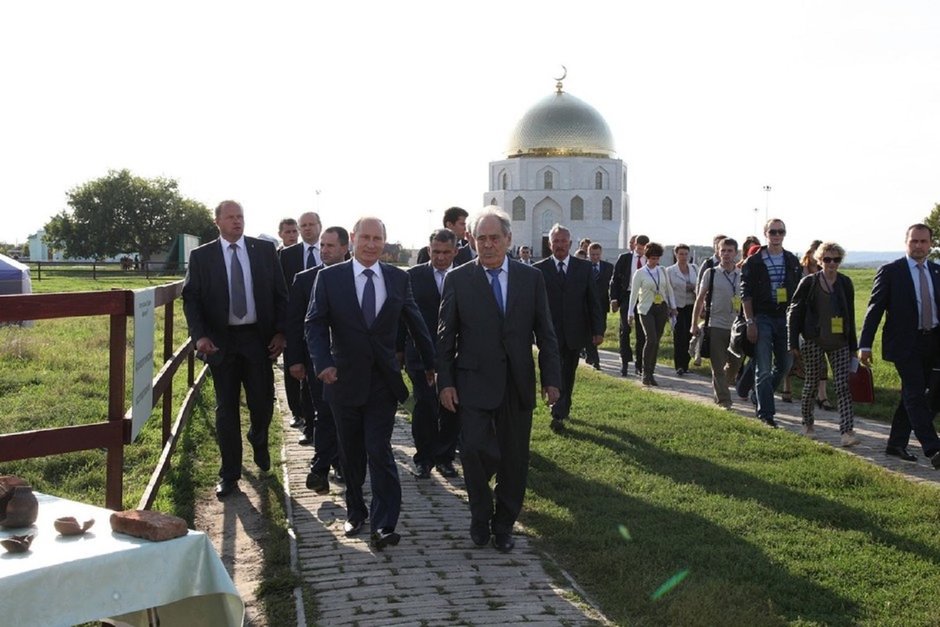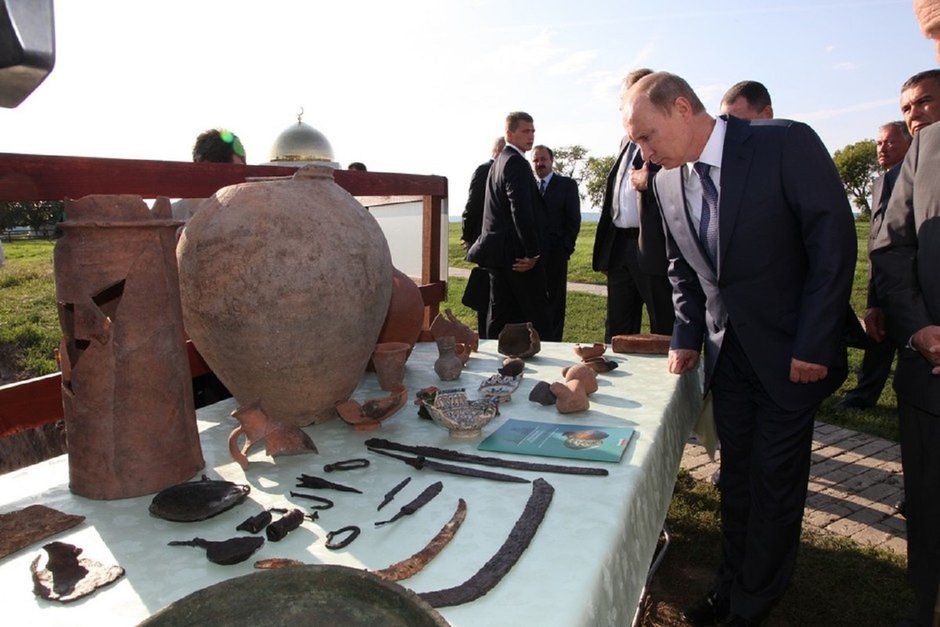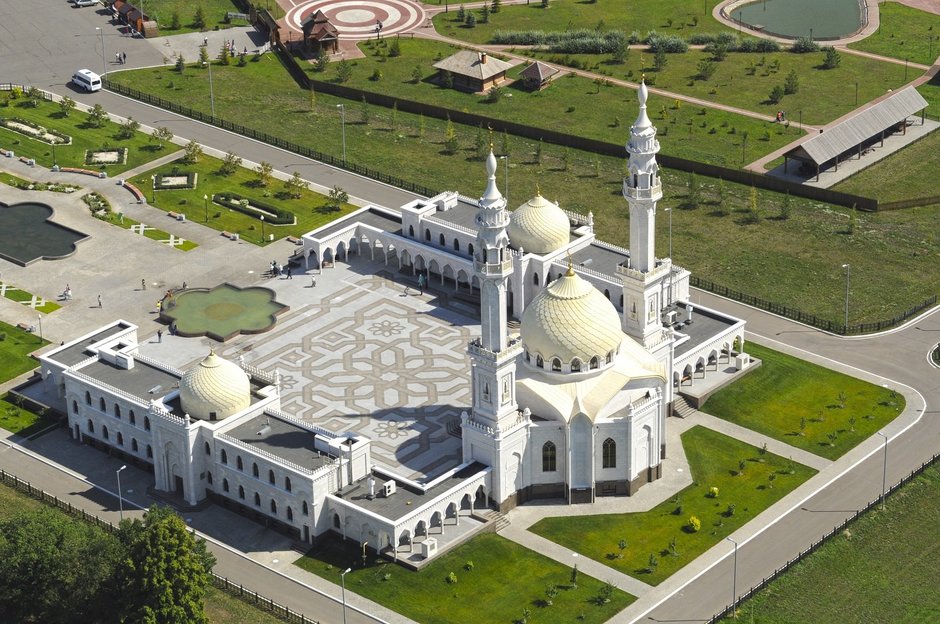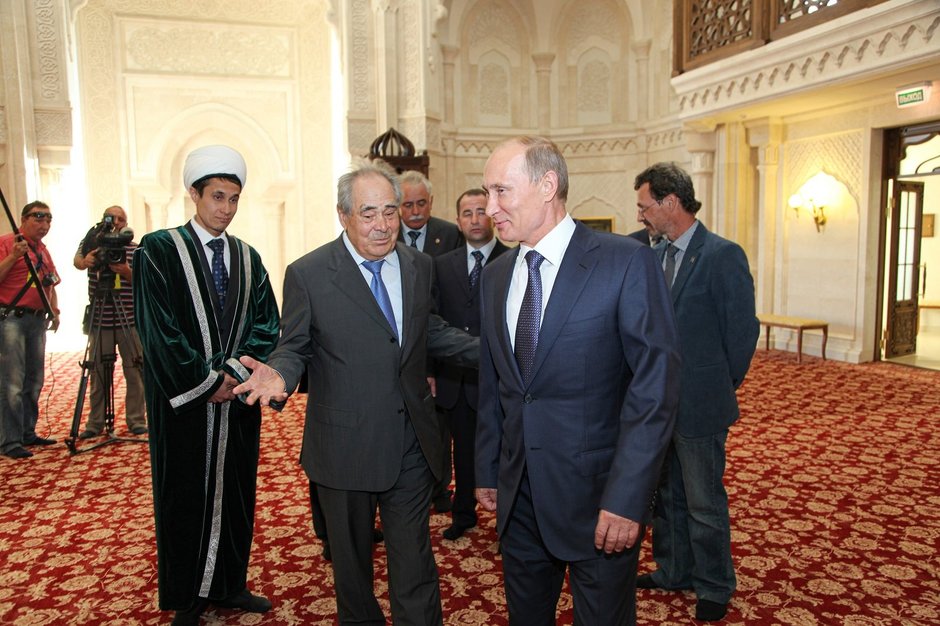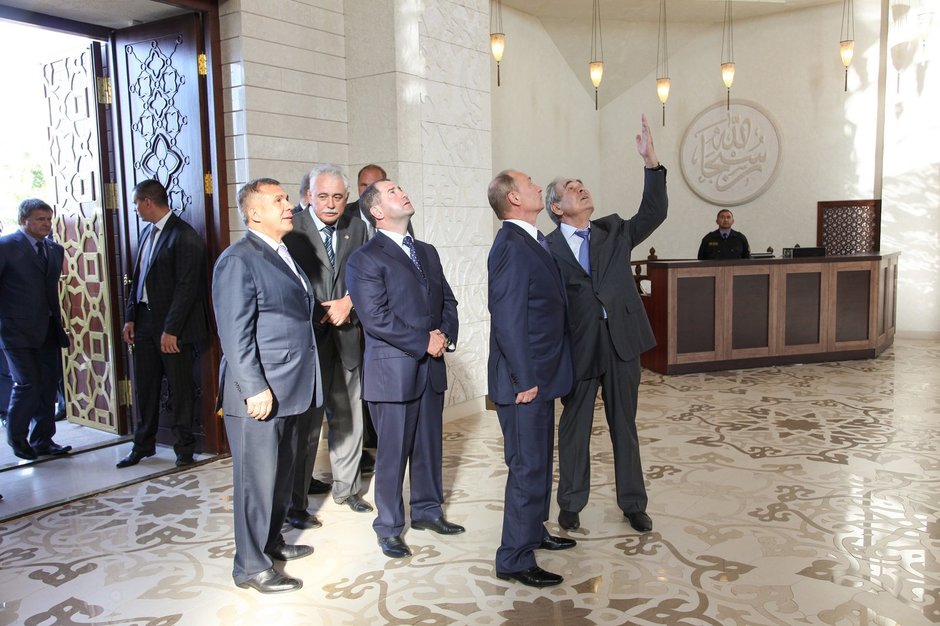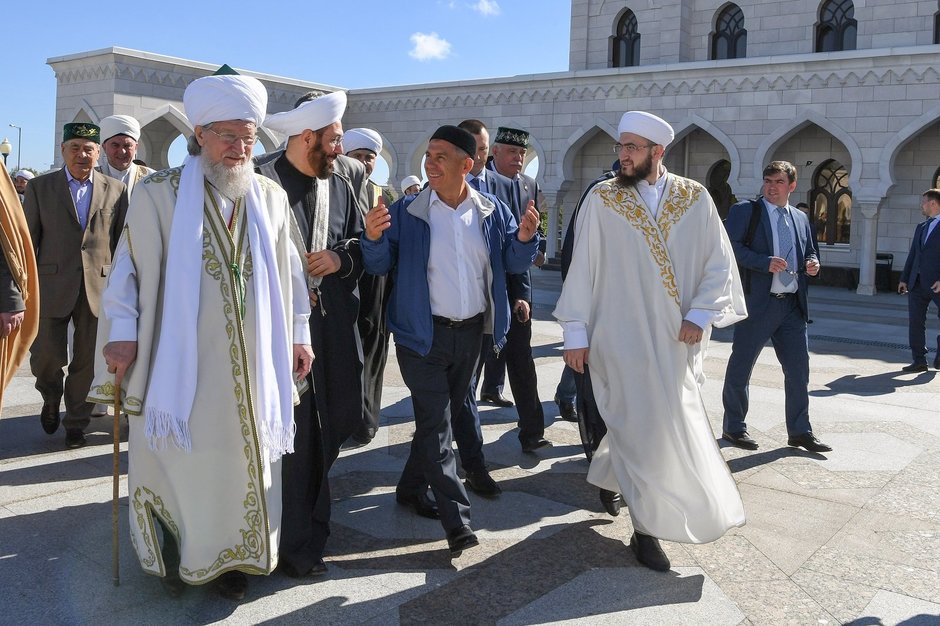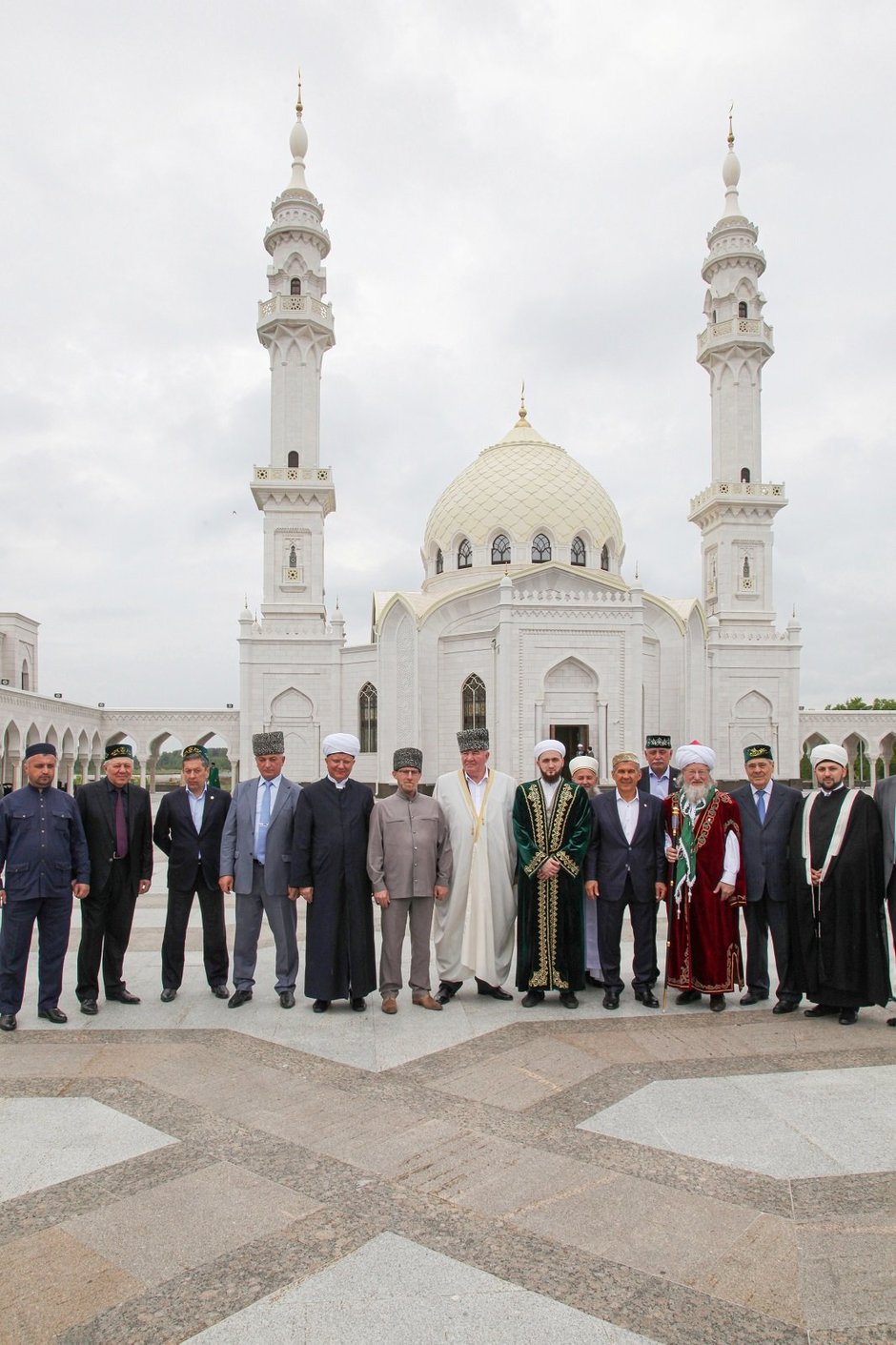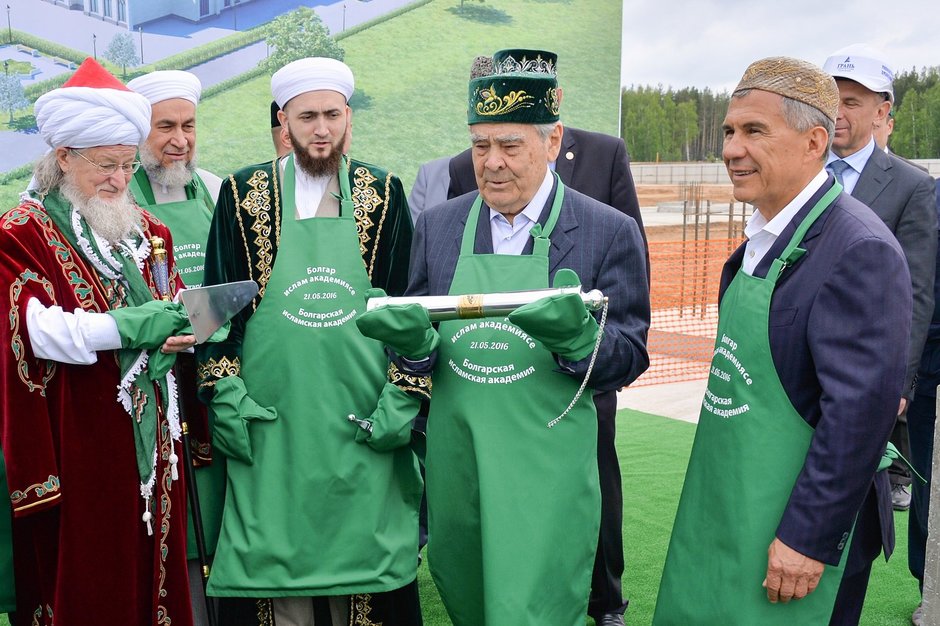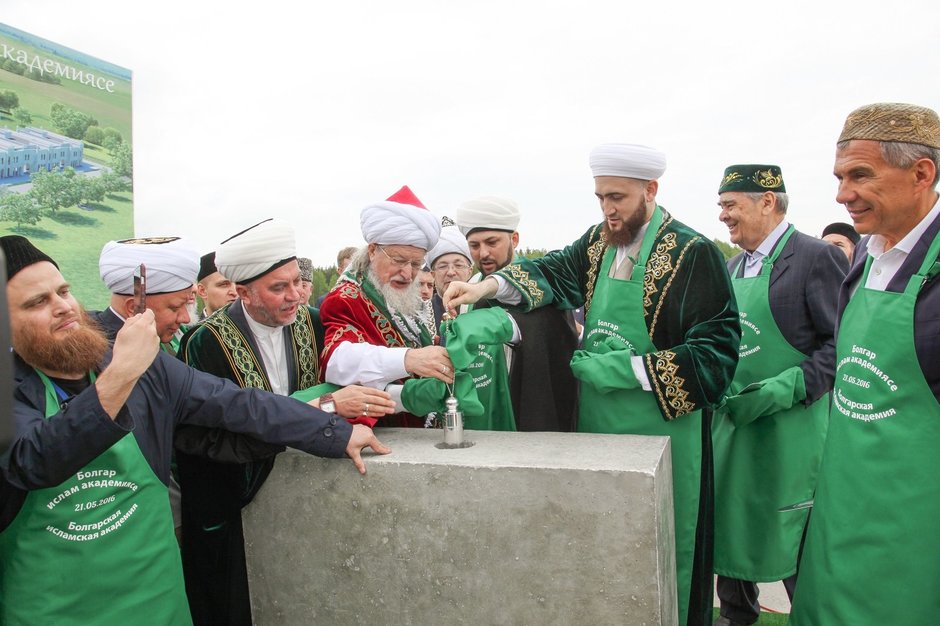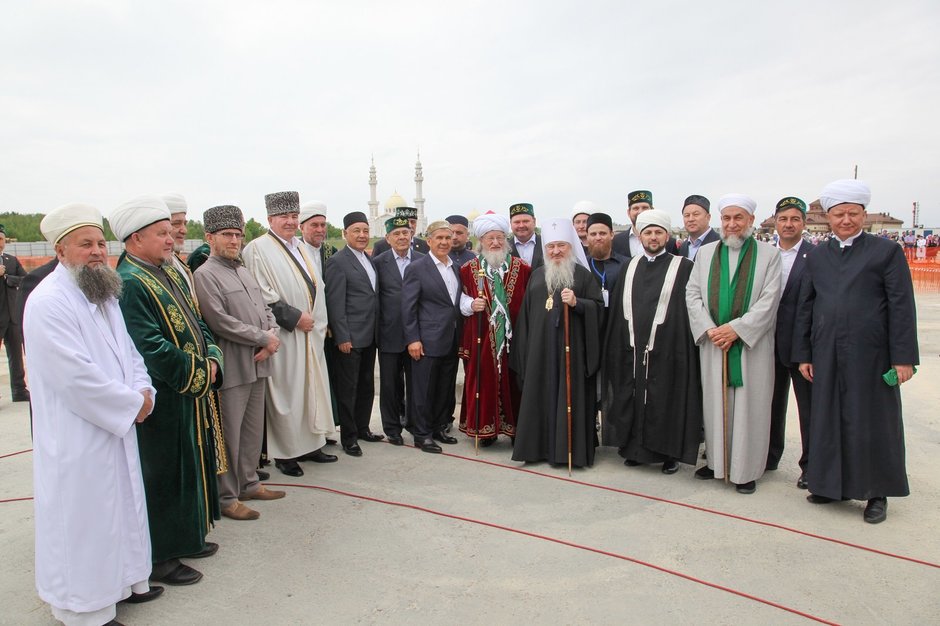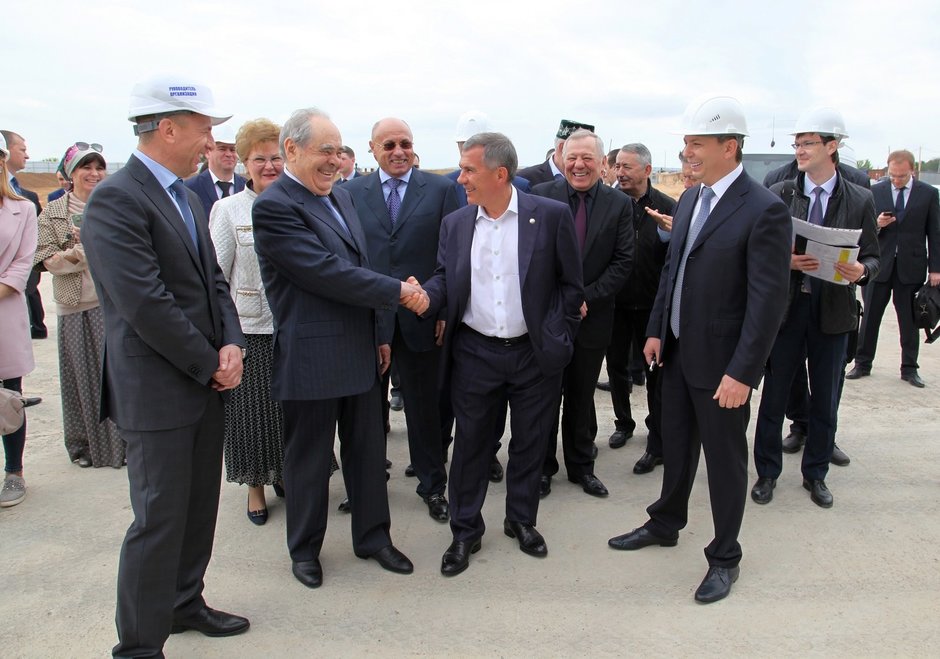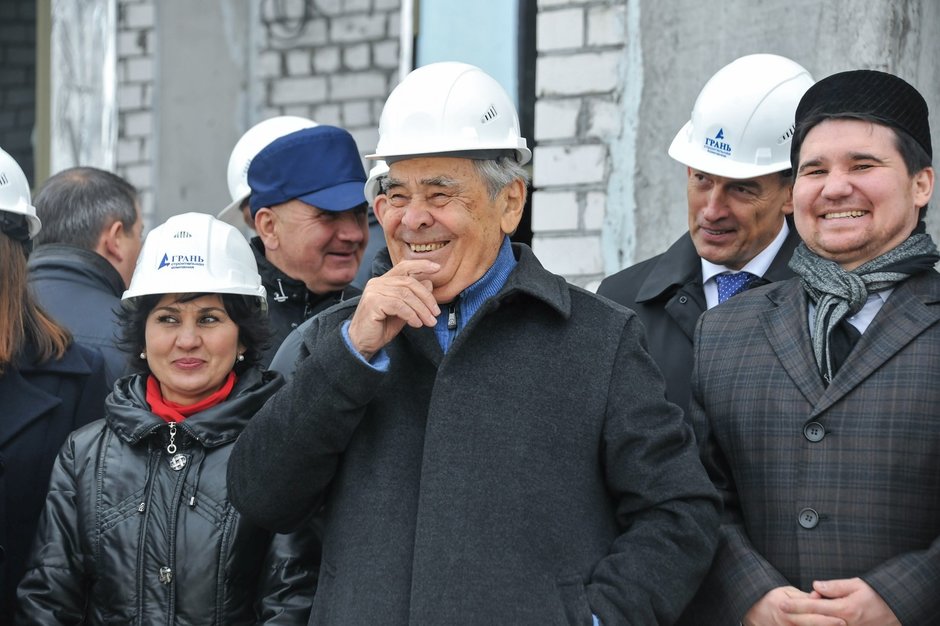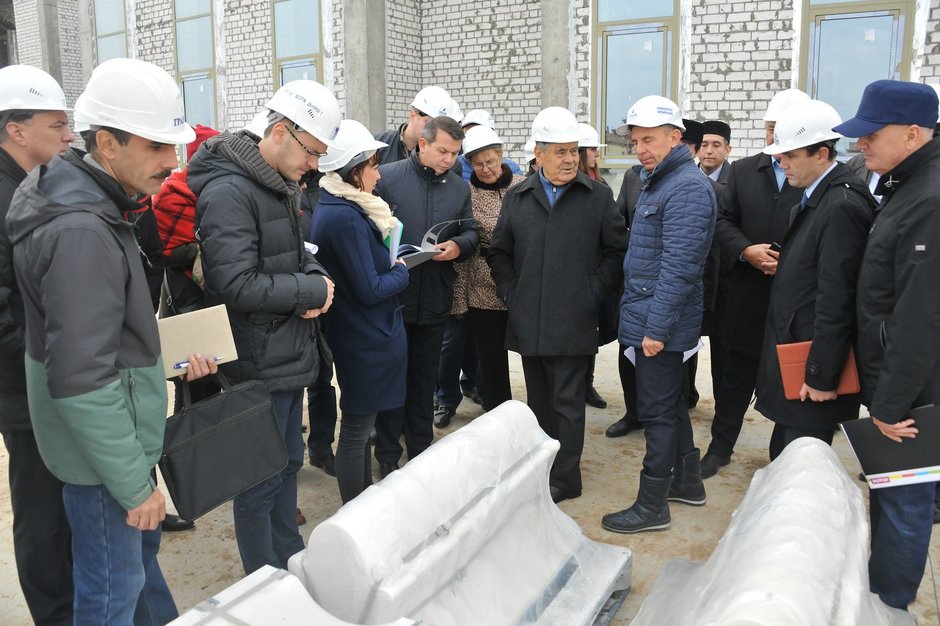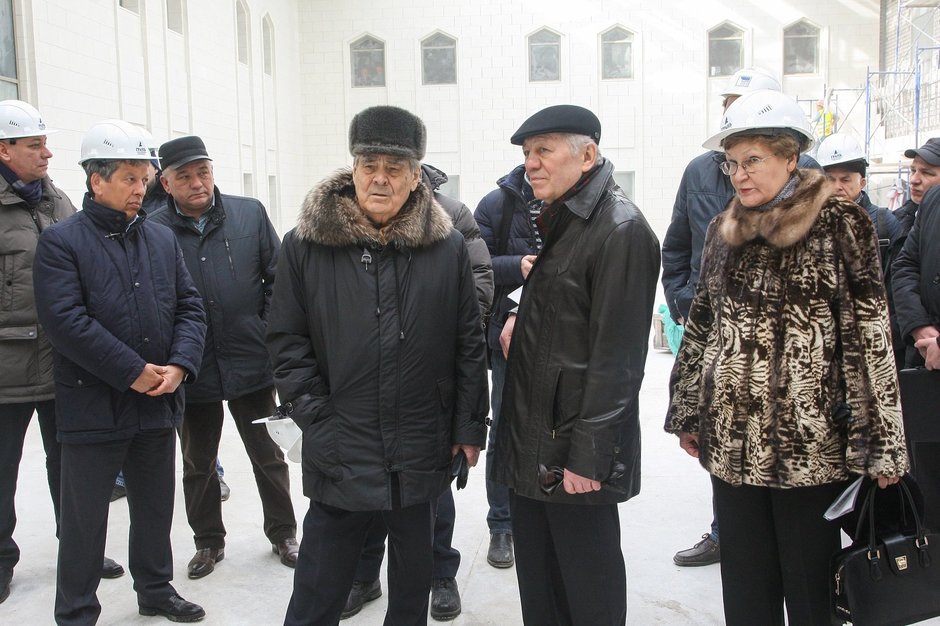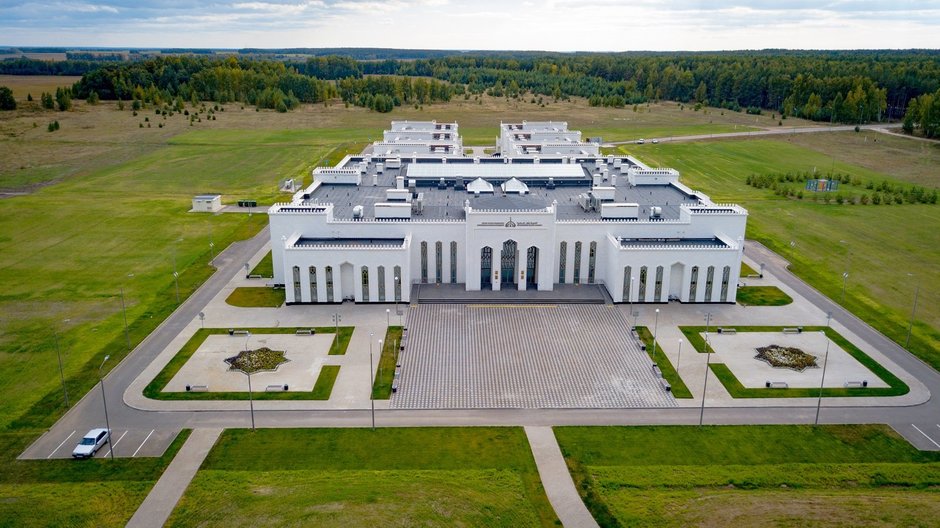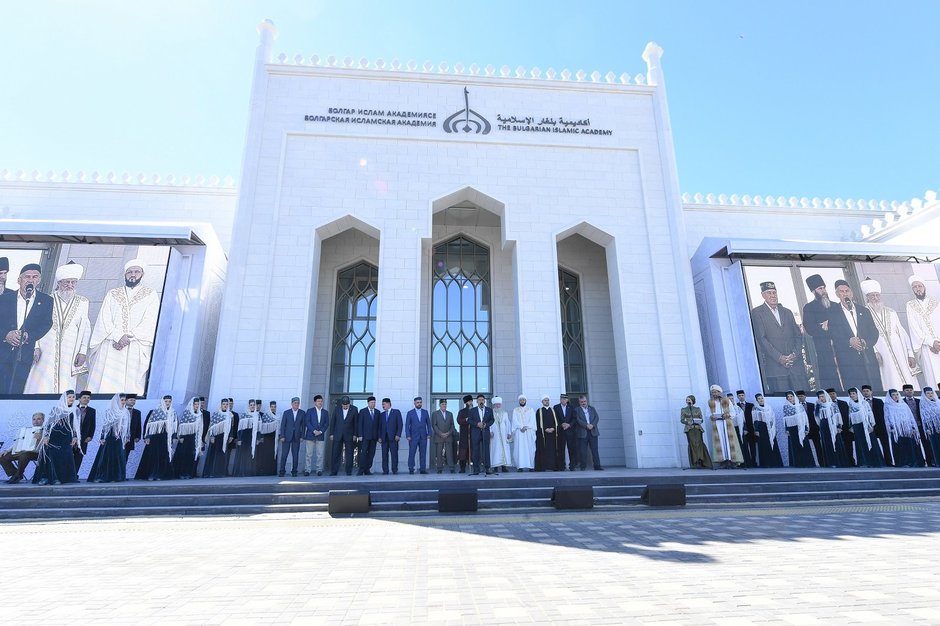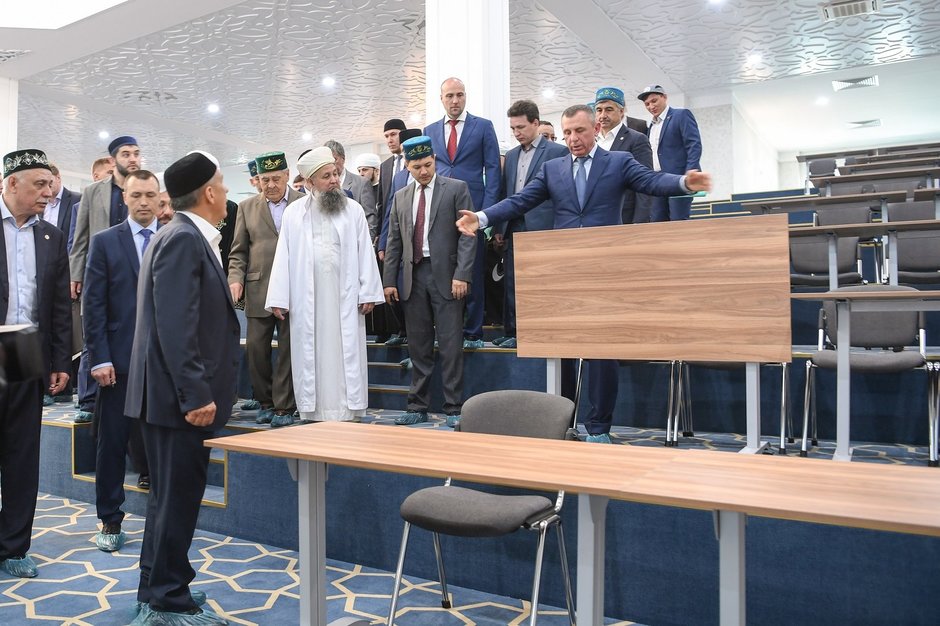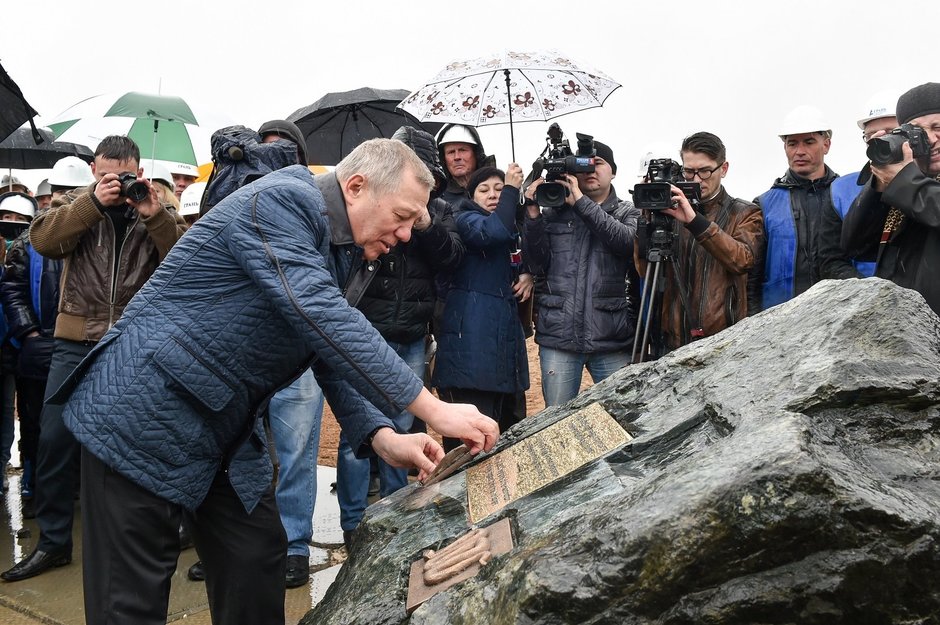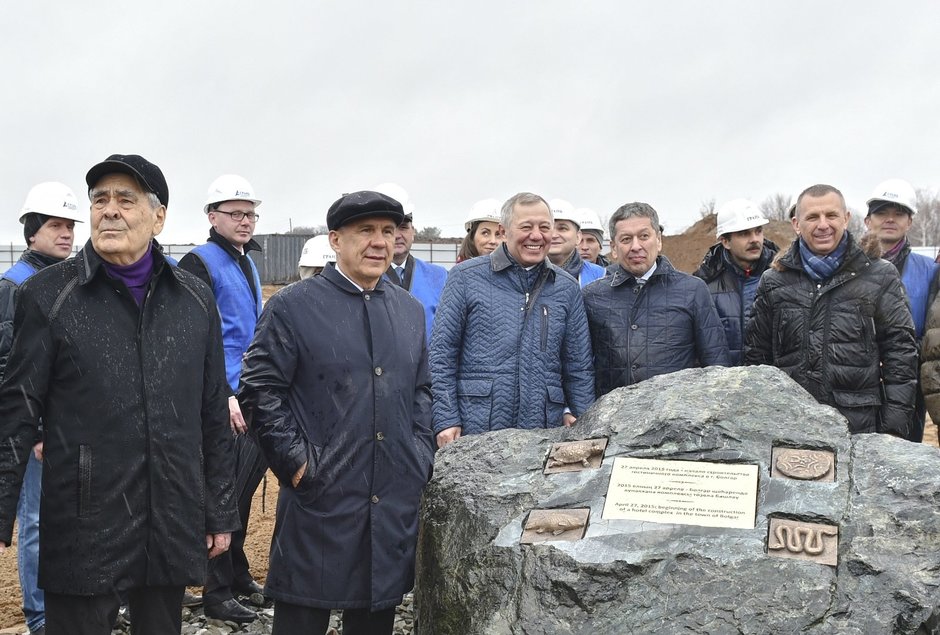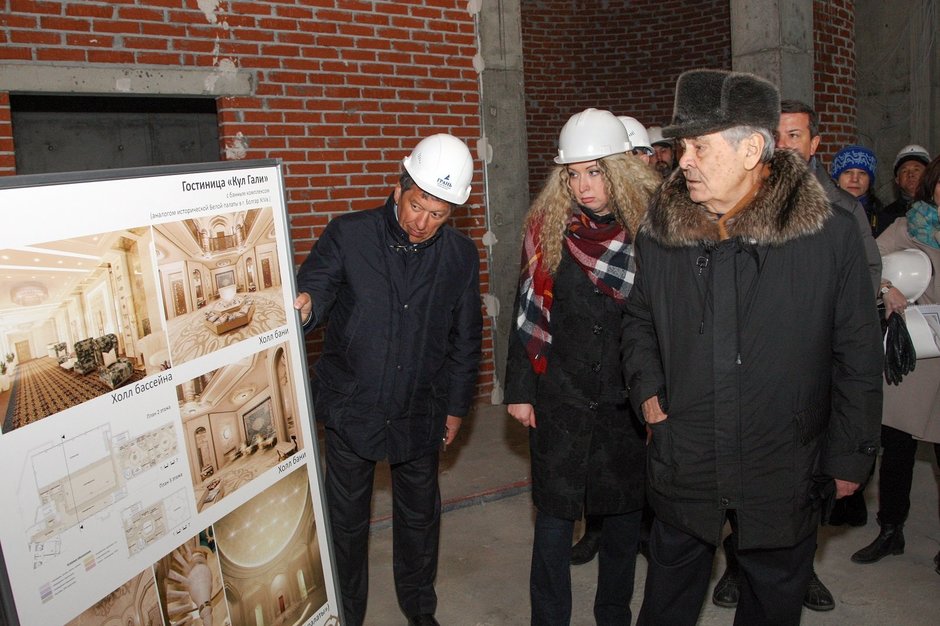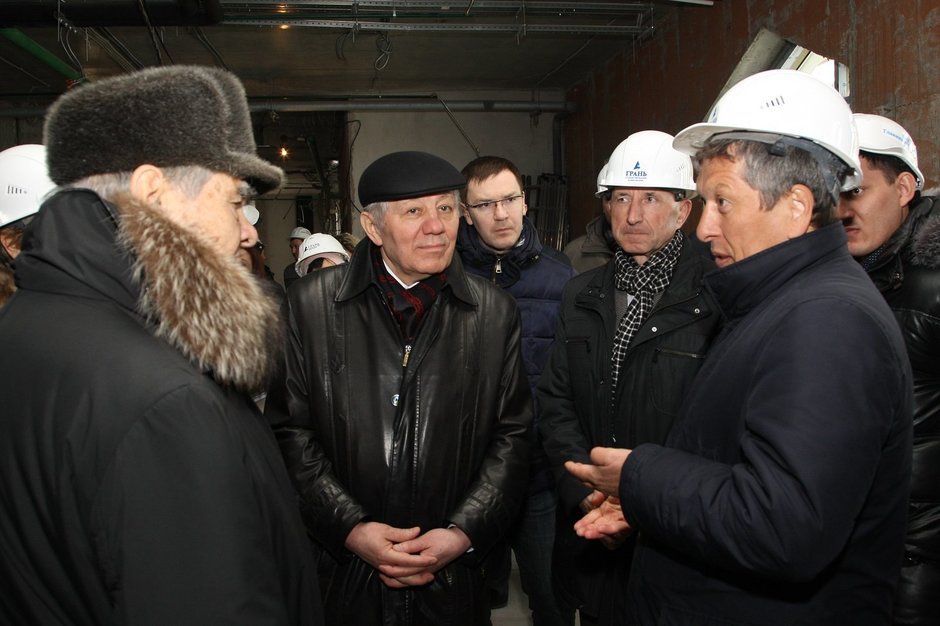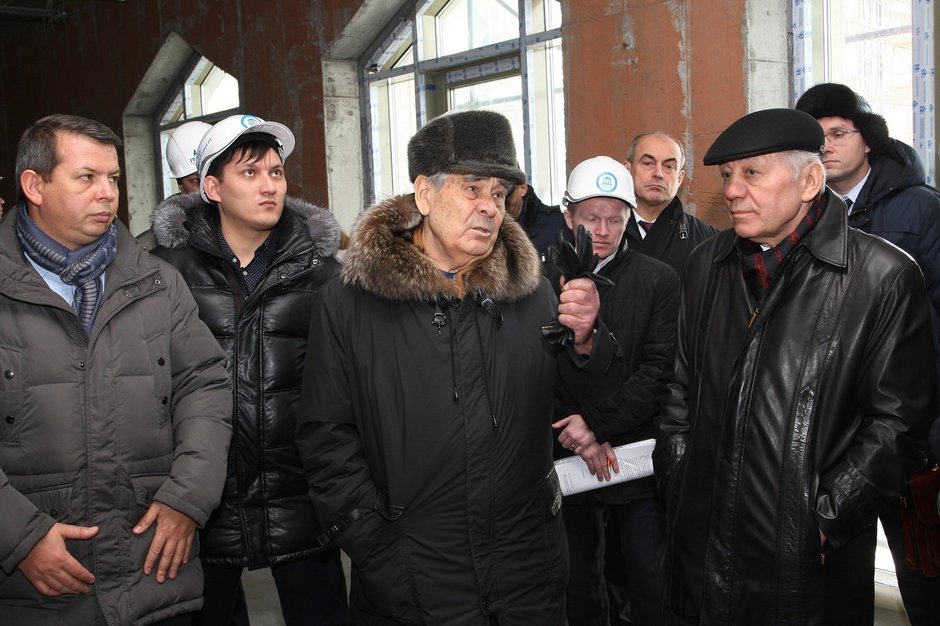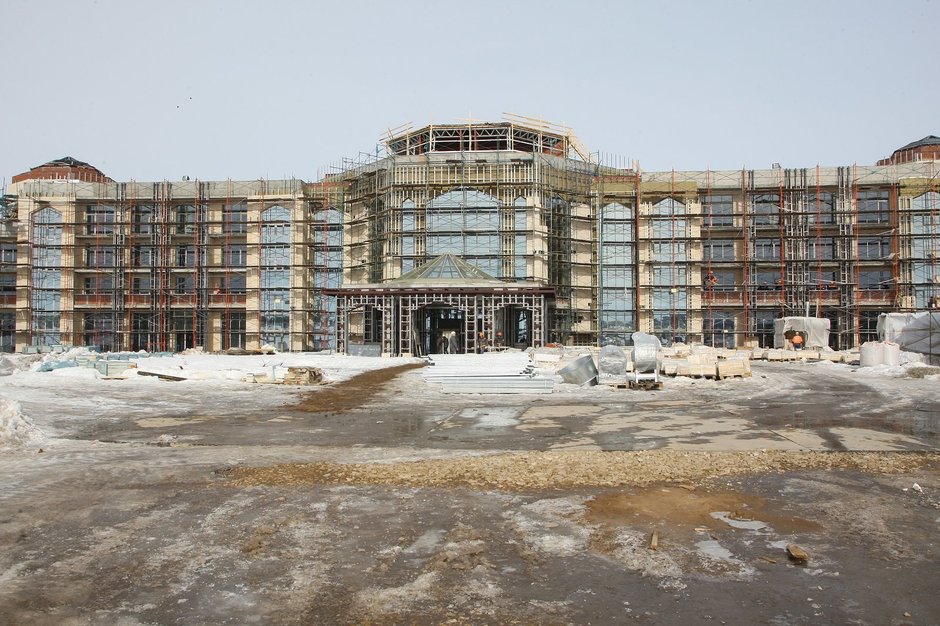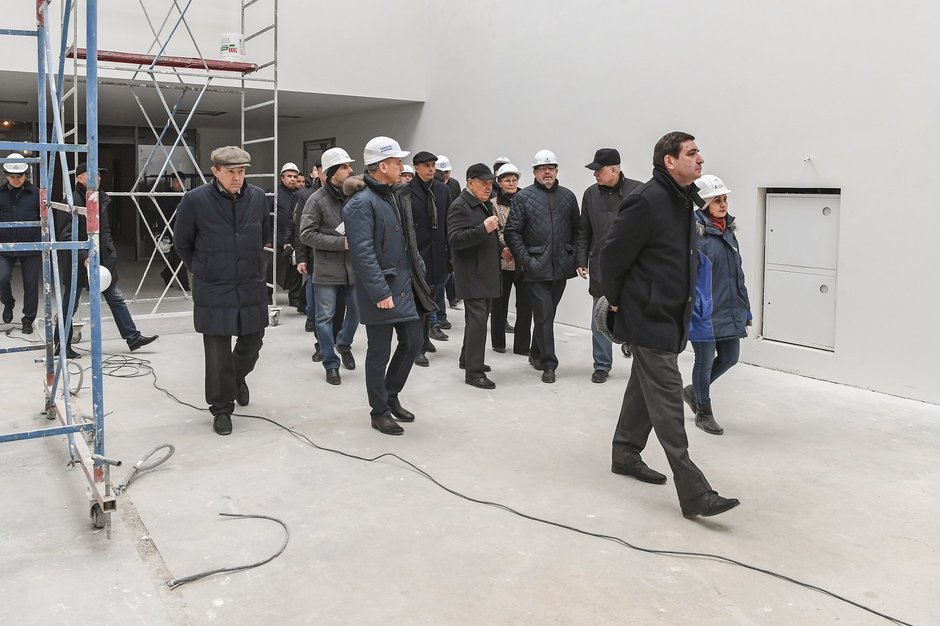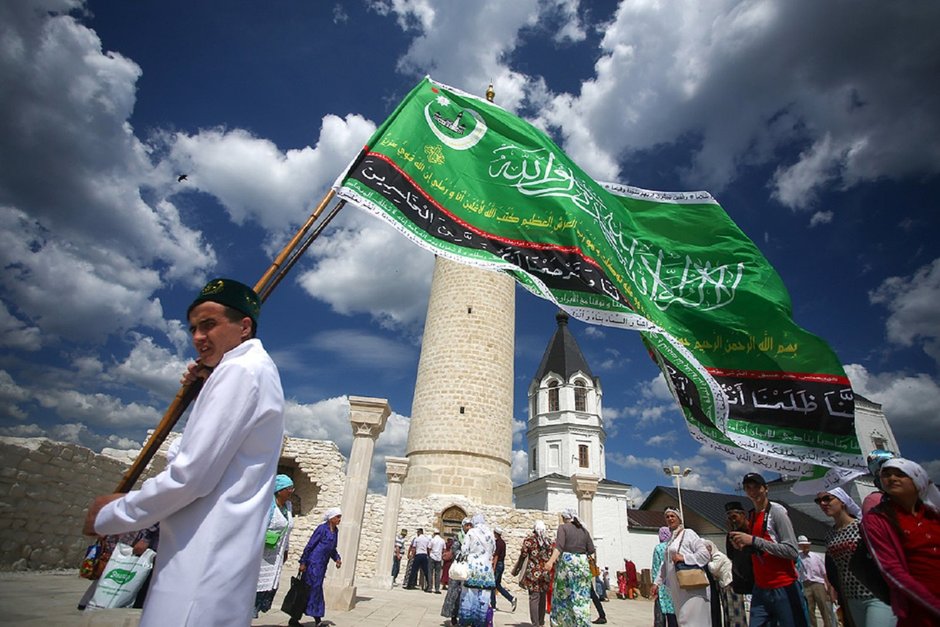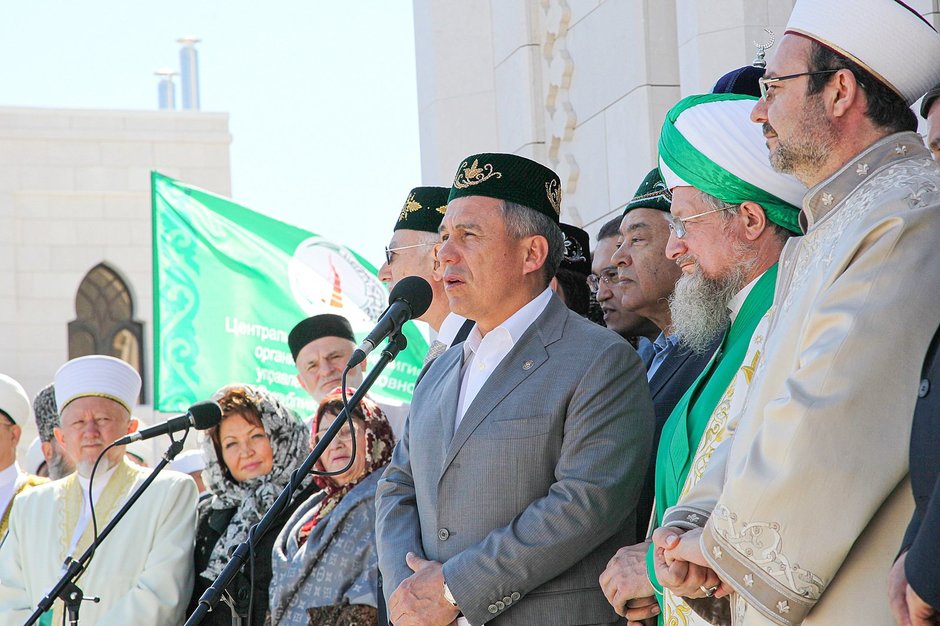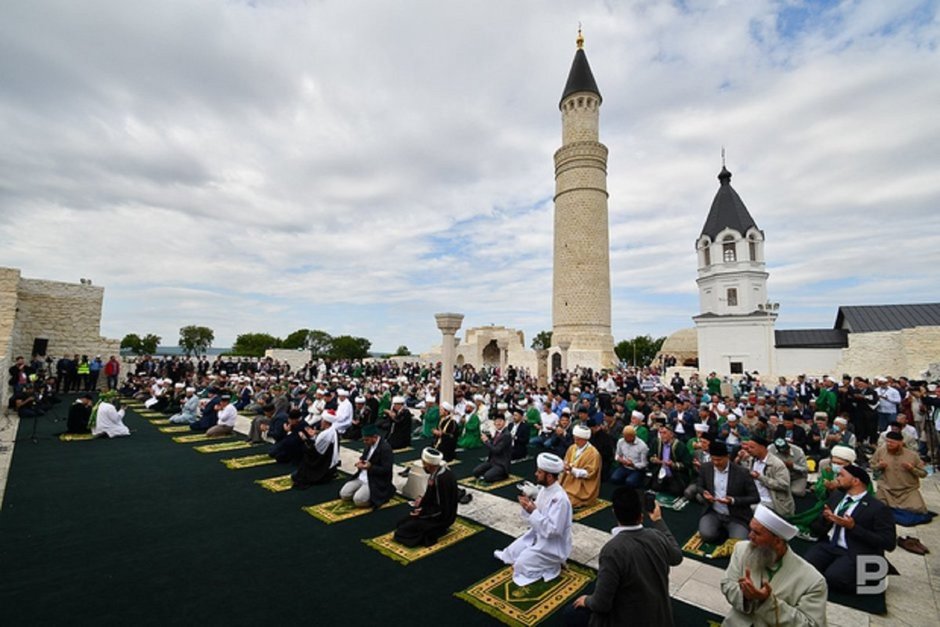How Bolgar’s revival became all people’s project
Russia’s Muslims celebrated the 1100th anniversary of the adoption of Islam by Volga Bulgaria recently: key celebrations took place in Bolgar — a place where milestones occurred
It is a holy place for everyone who considers oneself Tatar and Muslim. Bolgar is a city in which in 922, according to historical records that have survived, there happened an event that became life-changing in the history of many ethnicities who are today part of multiethnic Russia: the adoption of Islam as the official religion by Volga Bulgaria. The remains of one great cavity resembled ruins destroyed by time, winds and weather just 12 years ago. Read in Realnoe Vremya’s report how the ancient city has changed today and about the meaning of Bolgar.
Transformation of Bolgar
Like centuries ago today Bolgar (Spas District, Tatarstan) is a big religious and scientific centre protected by UNESCO, which means a recognised global historical and cultural site. Also, it is a point of attraction for tourists and a real gem on the map of Tatarstan and Russia that can amaze with its natural beauty too.
Just less than 15 years ago, it was quite a sorry sight: crumbling ruins of historical buildings growing into the soil surrounded by fields and rural houses that leaned with time. At the same time, Bolgar remained a kind of “place of power” in the memory of Tatars and all Muslims of the Volga region, Urals and Siberia since ancient times. In 1989, on Talgat Tajuddin’s initiative, there appeared a tradition to annually gather here, which is still reverently kept by believers.
Everything changed in 2010 when with the approval and support of the federal government and Vladimir Putin personally, with the active involvement of businesses and the population of the republic the Fund for the Revival of Historical and Cultural Monuments created by first Tatarstan President and State Adviser to the republic Mintimer Shaimiyev started the mission of restoring and repairing two historical and cultural sites at once: the Muslim holy site ancient Bolgar and Christian Orthodox island town of Sviyazhsk.
“Why did I so eagerly take up this issue when I was leading the post of the republican president in early 2010?” Mr Shaimiyev himself said in one of his interviews with Realnoe Vremya. “I raised the issue of Bolgar and Sviyazhsk in front of Vladimir Putin, he was then the chairman of the country’s government. These weren’t republican but federal monuments. Then, the federal budget allocated just 18-20 million rubles a year for their maintenance. This money wasn’t enough even to stop the destruction process. We seriously prepared for the meeting with Putin. Of course, we consulted in the republic first and decided that during the conversation we would say that it was necessary to increase the financing, therefore we were fighting for the restoration... on a parity basis, in other words, we will invest as much as you will give. This is how this issue was raised at the meeting with Putin in December 2009. I explained our proposal to him with arguments. I must say that Mr Putin immediately made a decision asking whom to give the task. I said Kudrin and Avdeyev. Kudrin was a finance minister, Avdeyev was a culture minister at that time.”
Tatarstan never puts things on the back burner. The works started immediately, moreover, everywhere: exploration, archaeology, reinforcement, conservation... And benefactors joined the important and noble action like several years earlier when the Kazan Kremlin and Qul Sharif Mosque and the Assumption Cathedral on the neighbouring territory were restored.
“There is no obligation: when people feel that a donation is used in an action and see the result, the work goes with a swing. Large companies allocate big sums, in fact, a third of what we spend, even a bit more, is donations of big companies and the population,” Mintimer Shaimiyev stressed then. The largest company not only in Tatarstan but also in Russia, including TAIF, Tatneft, LUKOIL, Russian Railways, Sberbank, are among those who actively participated in the restoration of monuments both financially and physically. Many monthly transferred money almost on a permanent basis.
The involvement of individuals cannot be downsides. During the years of the large-scale work, almost every resident of the republic, regardless of ethnicity, religion and age, somehow participated in these processes. Everyone’s name was added to the Book of Benefactors. A new volume of the book was printed every year. Interestingly, the oldest benefactor is over 100 years. The youngest is a day old. The newborn’s relatives made a donation as soon as they learnt about the happy event in the family. Another important moment is that managers of companies that are already benefactors often made personal donations too to the important and necessary action.
“For centuries, Bolgar was and remained in people’s memory as a spiritual bacon, a symbol of identity, association with the homeland. Many of our scientists and public activists of the 17-20th centuries had Tahallus Al Bulgari. Despite the change of the statehood — Volga Bulgaria, the Golden Horde, Khanate of Kazan, Russian state — this bond with Bolgar has never been interrupted, it has always stayed with us. This is an unfading symbol of the spirituality of the people, history, culture. This town is in every Tatar person’s heart, in every Muslim’s heart. Hence, the enthusiasm that seized all our country, I will dare to say, when large-scale reconstruction, restoration works, the creation of museums, the conservation of this invaluable heritage began. People, enterprises, individuals, business people, pensioners sincerely made as the biggest contribution as possible to this good deed. The revival of Bolgar became all people’s action, all people’s project that helped to strengthen our national self-consciousness more, republican, Russian patriotism, love for our history,” Director of the Sh. Marjani Institute of History, Doctor of Historical Sciences, member of the Board of Trustees of Revival republican fund Radik Salikhov shared his opinion with Realnoe Vremya’s journalist.
One of the most developed early Medieval states
According to historical records, as a state Volga Bulgaria was born in the 13-9th centuries, by the 11th century, the state was considered one of the most developed ones on the Eurasian continent.
The town of Bolgar, which was mentioned first in Arab written sources in the 10th century, was the first capital of the state that was located on the territories that cover five Russian regions today: Tatarstan and Udmurtia republics, Ulyanovsk, Penza and Samara Oblasts. Nowadays archaeologists have discovered 190 towns and 900 villages of Volga Bulgaria, or Silver Bulgaria as its also called.
Precisely Bolgar played a crucial historical role in the fate of Muslims of contemporary Russia becoming a place where Islam was voluntarily adopted as the official religion at the state level in 922. Later, Bolgar ceded the status of the capital to Bilyar — one of the largest European cities at that moment. Its area exceeded 800 hectares and remained a very important commercial centre and trade port of Volga Bulgaria for a long time.
“It was one of the highly developed Eastern European states of that time. The adoption of the monotheist religion 1100 years ago favoured the economic prosperity of this state more and more. Bolgars — Tatars’ ancestors — were a sedentary ethnicity dealing with agriculture. It was a kind of syncretism. Also, Bolgars were renowned as skilled craftsmen of that time. Jewellery that causes admiration even today, weapons, tableware... A lot of goods were created by local masters for everyday life and military purposes. It was a very diverse economy based on a factor of international trade too. Because Bolgar was at the crossroads of commercial roads of that era. The Great Volga Road, the Great Fur Road... It isn’t accidental that sellers from Central Asia and the East, Europe met in Bolgar and there was an exchange of commodities, at the same time an exchange of civilisations,” notes Radik Salikhov.
In 1236, the amazing city was burnt down during a Mongol assault chaired by Batu Khan. But the story didn’t end here: the khan’s temporary headquarters was located here first, then revived Bolgar became the centre of one of the Golden Horde provinces. And nowadays the ancient city again revives.
Impossible to get acquainted with Bolgar during a day
Not only Director of the Sh. Marjani Institute of History Radik Salikhov but also those who have ever visited this amazing land that is full of history are sure of this.
If one chooses to get by the river, a snow-white memorable sign crowned with a golden cupola welcomes the guests at the mooring. This isn’t just a symbol but also a guardian of a rich collection of unique exhibits telling you the history of Great Bulgaria and the people living here.
A majestic panorama of the huge town with partly restored and partly conserved objects that have survived until now opens in front of the people who went up to the slope: minarets, Black and White Chambers, the Khan’s Palace, remains of defensive earthworks... It will take hours only to see all this territory. It will take days to examine them closer. Also, there are craft workshops and museums, including a unique bread museum.
“The opening of the bread museum is also correct approach. It is absolutely right and evidence-based because we associate the appearance of both Bolgar and other cities — all our urban culture, agrarian culture, early Medieval craftsmanship — with the appearance of Volga Bulgaria,” stresses Radik Salikhov. And he adds: “During Volga Bulgaria, the Golden Horde and next periods, this area was the breadbasket, very rich in bread. Wheat, rye, other grains were an important element of trade between states. As it is known, Volga Bulgaria shipped grains to Old Russian principalities saving them from hanger at times.”
The White Mosque became an adornment of Bolgar’s adjacent territory. It has Russia’s first and unique Islamic academy behind it. The first foundation stone was laid in May 2016, and it opened its doors to Islam students in September 2017.
“The construction of Bolgar Islamic Academy is also a revival. Bolgar was one of the biggest centres of Muslim education, Muslim science in the Middle Ages too. We know from historical documents that there were big madrasahs, outstanding theologians worked here, Muslim students from different parts of the Eurasian continent of the Turkic Muslim world studied there. This is why the construction of Bolgar Islamic Academy has very solid historical foundations,” Radik Salikhov emphasised in an interview with Realnoe Vremya.
Mintimer Shaimiyev himself noted:
“There was a meeting in Ufa in 2015, Vladimir Putin wished Russia had an educational institution that would allow getting a higher education (a master’s degree, PhD) in religion, train our theologians our modern society needs. Such an experience the Republic of Tatarstan has in peaceful coexistence is in very high demand. Bolgar Islamic Academy is a place to educate and teach religious clerics of Tatarstan, Russia and the world. It is a site making the Hanafi teaching more popular as the most tolerant religious law school. It is the land that has many years of history and became an important era in Tatars’ adoption of Islam.”
The construction of the academy was carried out with benefactors’ active support, including TAIF Group of Companies.
However, Bolgar today is not only a historical and cultural but also a religious centre. This is also a science and research centre, claims Radik Salikhov.
“It is a very good archaeological base where the Museum of Bolgar Civilisation works at a very high research level, it is a place where research institutes are constantly based, not only from the Republic of Tatarstan but also the Russian Academy of Sciences. It is a place where scientists representing different spheres of knowledge cooperate — from specialists in architecture to archaeologists and representatives of natural sciences. In other words, Bolgar is a research centre where, on the one hand, a very strong Muslim scientific component was revived and, on the other hand, there is a complex of humanitarian sciences, archaeology, everything that helps to save, study and popularise this ancient heritage of Bolgar.”
If we add the beautiful nature — a forest, a vast river, an improved embankment with a lot of architectural forms — to the historical and cultural, religious and scientific facilities, one won’t want to leave Bolgar after starting to see it. This is why a five-star hotel named after the famous Bolgar poet Qul Gali was built with Tatarstan benefactors’ money, TAIF was and remains one of the most active of them, appeared outside the historical protection zone.
“I think the construction of the Qul Gali construction is the right decision regarding the architecture, location, service quality. The natural beauty, landscapes, historical sites... To manage to see everything, one can stay for a few days and enjoy one of the most beautiful sites of Tatarstan. The development of domestic tourism, educational tourism is today’s trend. I think that even this hotel won’t be enough soon with a rise in the amount of guests to Bolgar and another one will have to be built. I believe that such hotels, and not one but designed for different preferences of the guests, should be built at the centres of tourist attraction of our republic. It is the correct approach, people should receive the service and approach they got used to abroad,” thinks Radik Salikhov.
On Saturday, 21 May 2022, Bolgar again gathered guests at the traditional Holy Bolgar Congress. This was the day of the adoption of Islam — an event historians consider as important for the civilisation and the world. Muslims not only from all over Tatarstan and neighbouring regions but also Russia, neighbouring foreign countries gather in this ancient town for a reason. It also became a tradition that numerous attendees of the Russia — Islamic World: KazanSummit International Economic Summit join the guests of the celebration.
